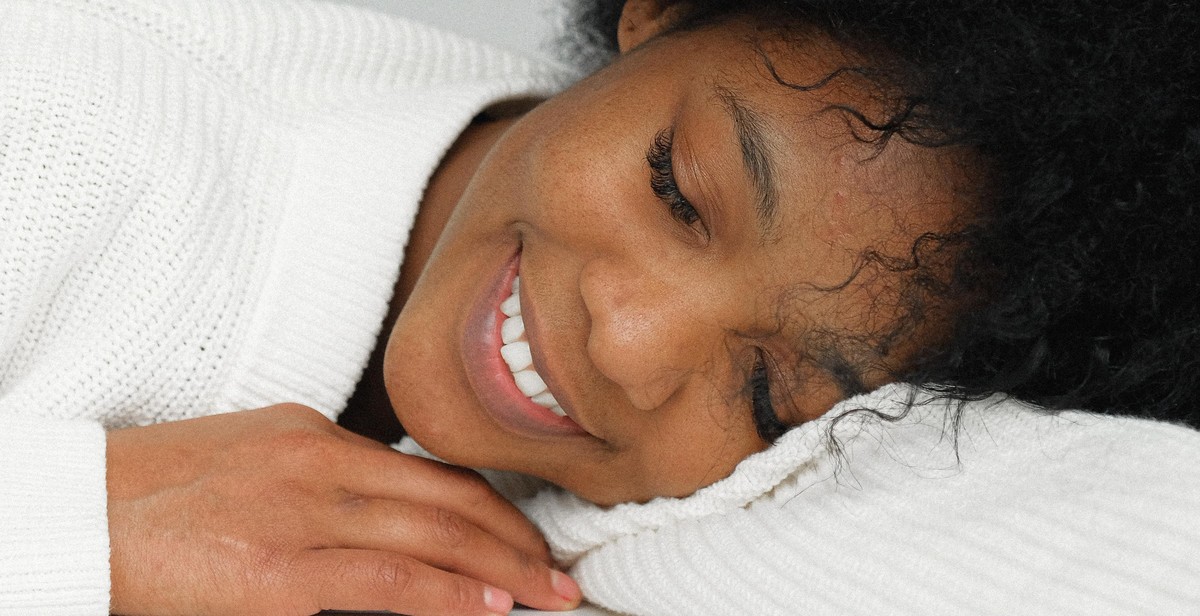How to Overcome Sleep Paralysis: Coping Strategies and Relaxation Techniques
Sleep paralysis is a type of parasomnia that occurs when a person experiences a temporary inability to move or speak while falling asleep or waking up. This condition can be a frightening experience for those who suffer from it, as they may feel trapped or unable to escape from a perceived danger.
Causes of Sleep Paralysis
The exact cause of sleep paralysis is not fully understood, but it is believed to be related to disrupted REM (Rapid Eye Movement) sleep patterns. Other factors that may contribute to the occurrence of sleep paralysis include stress, anxiety, sleep deprivation, and certain medications.
Symptoms of Sleep Paralysis
The primary symptom of sleep paralysis is the inability to move or speak during episodes of wakefulness. Other symptoms may include hallucinations, a feeling of pressure on the chest, and a sense of impending doom.
The Importance of Coping Strategies and Relaxation Techniques
While there is no cure for sleep paralysis, there are several coping strategies and relaxation techniques that can help individuals manage their symptoms. These may include maintaining a regular sleep schedule, reducing stress and anxiety, practicing relaxation techniques such as deep breathing or meditation, and seeking professional help if necessary.
By implementing these coping strategies and relaxation techniques, individuals with sleep paralysis can learn to manage their symptoms and improve their overall quality of life.

Coping Strategies for Sleep Paralysis
Sleep paralysis can be a frightening and overwhelming experience, but there are several strategies that can help manage and reduce the frequency of episodes. These strategies include relaxation techniques, improving sleep hygiene, cognitive-behavioral therapy, and medication.
Relaxation Techniques
Relaxation techniques such as deep breathing, meditation, and progressive muscle relaxation can help reduce the anxiety and stress that may contribute to sleep paralysis. Practicing these techniques regularly can also improve overall sleep quality and reduce the likelihood of experiencing sleep paralysis.
Improving Sleep Hygiene
Improving sleep hygiene involves creating a conducive sleep environment and developing healthy sleep habits. Some tips to improve sleep hygiene include:
- Establishing a consistent sleep schedule
- Avoiding caffeine, nicotine, and alcohol before bedtime
- Creating a comfortable sleep environment with appropriate lighting and temperature
- Avoiding stimulating activities before bedtime, such as watching TV or using electronic devices
Cognitive Behavioral Therapy
Cognitive-behavioral therapy (CBT) is a type of therapy that focuses on changing negative thought patterns and behaviors that may contribute to sleep paralysis. This therapy can help individuals identify triggers and develop coping strategies to manage symptoms. CBT may also include relaxation techniques and other behavioral interventions.
Medication
In some cases, medication may be prescribed to manage sleep paralysis. Antidepressants, such as selective serotonin reuptake inhibitors (SSRIs) and tricyclic antidepressants (TCAs), may be prescribed to help regulate sleep and reduce anxiety. However, it is important to consult with a healthcare provider before taking any medication for sleep paralysis.

Relaxation Techniques for Sleep Paralysis
Sleep paralysis can be a scary and unpleasant experience, but there are several relaxation techniques that can help you cope with it. These techniques can help you calm your mind and body, and reduce the severity of the symptoms you experience during sleep paralysis.
1. Deep Breathing
Deep breathing is a simple and effective relaxation technique that can help you calm your mind and body during sleep paralysis. To practice deep breathing, lie on your back and place one hand on your chest and the other on your stomach. Take a deep breath in through your nose, feeling your stomach rise as you inhale. Hold your breath for a few seconds, then exhale slowly through your mouth, feeling your stomach fall as you exhale. Repeat this process several times until you feel more relaxed.
2. Progressive Muscle Relaxation
Progressive muscle relaxation is a technique that involves tensing and relaxing different muscle groups in your body. This technique can help you release tension and relax your muscles during sleep paralysis. To practice progressive muscle relaxation, lie on your back and focus on one muscle group at a time. Tense the muscle group for a few seconds, then release the tension and relax the muscle. Move on to the next muscle group and repeat the process until you have tensed and relaxed all the major muscle groups in your body.
3. Visualization
Visualization is a technique that involves imagining a peaceful and calming scene in your mind. This technique can help you relax your mind and reduce the severity of the symptoms you experience during sleep paralysis. To practice visualization, close your eyes and imagine yourself in a peaceful and calming environment, such as a beach or a forest. Focus on the details of the scene and try to imagine yourself feeling calm and relaxed.
4. Mindfulness Meditation
Mindfulness meditation is a technique that involves focusing your attention on the present moment and accepting your thoughts and feelings without judgment. This technique can help you calm your mind and reduce the severity of the symptoms you experience during sleep paralysis. To practice mindfulness meditation, sit in a comfortable position and focus your attention on your breath. Notice the sensation of your breath as you inhale and exhale, and try to keep your mind focused on the present moment.
Overall, these relaxation techniques can help you cope with sleep paralysis and reduce the severity of the symptoms you experience. By practicing these techniques regularly, you can improve your ability to relax and calm your mind and body during sleep paralysis.

Improving Sleep Hygiene for Sleep Paralysis
Sleep paralysis can be a frightening and frustrating experience that can disrupt your sleep patterns and leave you feeling exhausted. However, there are several steps you can take to improve your sleep hygiene and reduce the likelihood of experiencing sleep paralysis.
Establish a Regular Sleep Schedule
One of the most effective ways to improve your sleep hygiene is to establish a regular sleep schedule. This means going to bed and waking up at the same time every day, even on weekends. This helps regulate your body’s internal clock, making it easier to fall asleep and stay asleep throughout the night.
Create a Relaxing Sleep Environment
Another important factor in improving your sleep hygiene is creating a relaxing sleep environment. This means keeping your bedroom dark, quiet and cool, and removing any distractions that could keep you awake. You may also want to invest in a comfortable mattress and pillows to ensure that you are comfortable throughout the night.
Avoid Stimulants Before Bedtime
Stimulants such as caffeine, nicotine and alcohol can interfere with your sleep patterns and make it harder to fall asleep. It is important to avoid these substances in the hours leading up to bedtime to ensure that you are able to fall asleep easily and stay asleep throughout the night.
Limit Screen Time Before Bedtime
Finally, it is important to limit your screen time before bedtime. The blue light emitted by electronic devices such as smartphones and tablets can interfere with your body’s production of melatonin, making it harder to fall asleep. Try to avoid using these devices for at least an hour before bedtime to ensure that your body is able to produce enough melatonin to help you fall asleep easily.
- Establish a regular sleep schedule
- Create a relaxing sleep environment
- Avoid stimulants before bedtime
- Limit screen time before bedtime
By following these simple steps, you can improve your sleep hygiene and reduce the likelihood of experiencing sleep paralysis. If you continue to experience sleep paralysis despite these measures, it is important to speak with your healthcare provider to rule out any underlying medical conditions.

Conclusion
Overall, sleep paralysis can be a frightening experience, but there are effective coping strategies and relaxation techniques that can help alleviate its symptoms. It is important to remember that seeking professional help is always an option for those who may struggle with severe or recurring episodes of sleep paralysis.
Seeking Professional Help for Sleep Paralysis
If you find that your sleep paralysis is severely impacting your daily life or causing significant distress, it may be time to seek professional help. A medical professional such as a doctor or sleep specialist can help diagnose any underlying sleep disorders or medical conditions that may be contributing to your sleep paralysis.
In addition, a mental health professional such as a therapist or counselor can help you develop coping strategies to manage the anxiety and fear associated with sleep paralysis. They may recommend relaxation techniques, cognitive-behavioral therapy, or other forms of therapy to help you overcome your symptoms.
Final Thoughts
While sleep paralysis can be a scary experience, it is important to remember that it is a common phenomenon that can be managed with effective coping strategies and relaxation techniques. By practicing good sleep hygiene, reducing stress, and seeking professional help when necessary, you can learn to overcome your sleep paralysis and enjoy a restful night’s sleep.
